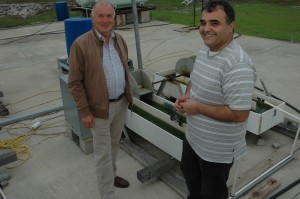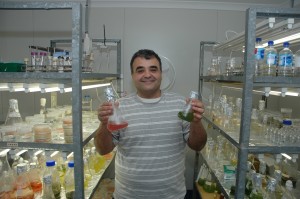Algae discovery means pig waste could provide more for farms
Murdoch University researchers are investigating whether the effluent from piggeries can be effectively treated with micro and macroalgae so that species of the organism can be safely fed back to pigs.
The Cooperative Research Centre for High Integrity Australian Pork (Pork CRC) has invested $300,000 with the Algae Research and Development Centre at Murdoch University to investigate the proposals, which would cut costs, recover energy from waste and reduce the potential for groundwater contamination at piggeries.
So far Centre Director, Dr Navid Moheimani and his team from the School of Veterinary and Life Sciences have discovered three different types of microalgae that can grow on untreated piggery anaerobic digestate effluent, which typically contains extremely high levels of ammonium.
Anaerobic digestion in lagoons or ponds on farms is currently the most common method used to process piggery waste. The discovery is a world first and offers a potentially cost effective means of remediating piggery effluent.
They have found that microalgae remove ammonia, other nutrients and potentially reduce the pathogen load in the effluent, meaning that the treated waste water can be reused.
The algal biomass produced is potentially a protein rich food source for pigs and other animals, although Dr Moheimani said extensive testing would be required.
“We have high hopes that this method of treating effluent will ensure the algal biomass produced can be fed back to the pigs which will make Australian piggeries much less wasteful and more cost competitive,” said Dr Moheimani.
“Of course if this works for pigs, it could also work for different livestock.
“Pig slurry could well be viewed by the industry as a resource rather than a waste management issue.”
For more information>>>> Read the full release





